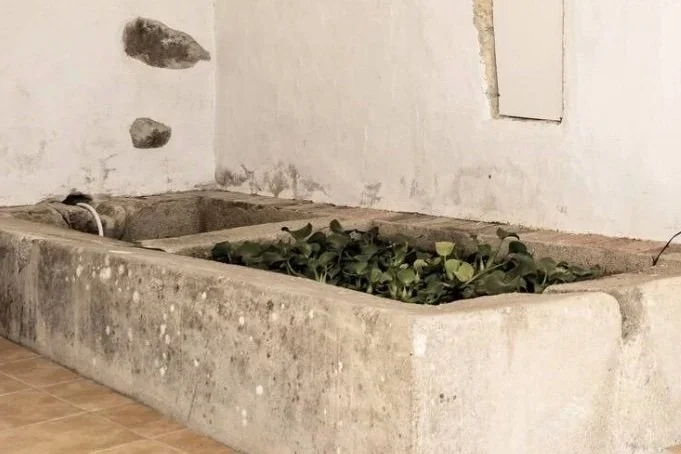The Tanks
Back in the day, here in Central Portugal, water brought people together. Coimbra seemed a world way, and towns like Poiares were built on sharing.
Every time large quantities of water were needed, the small creek by the side of the house was diverted, allowing water to flow through our washing tanks. This also benefited everyone in the village of Venda Nova whose garden walls bordered the water.
The spring was located a few metres upstream, and the village women used it daily to fill their terracotta pots, which they carried on their heads all the way home. They walked straight as a plumb line, facing forward without twisting left or right. I always wondered how they managed to stretch out their arms on either side of their body and grab the hands of their little ones.
For the water to flow, the metal panels had to be lifted, and we were not allowed near them because their round handles were dangerous and rusty. The water came from a tank near the wash tanks for the villagers, for not everyone had these in their gardens.
Washing days were great fun for us all. Firstly, we would gather near the end of the aqueduct which ran under the road. Then, we waited for Tio Augusto to lift the heavy metal stop on our side, initially very slowly, allowing only a trickle of water in.
We would then run along the Roman terracotta tiled channel, some tiles almost black and spotted with white dried moss, others shiny and red, placed round side down to make a trench on top of a small red brick wall - which we were not allowed to sit on.
Finally, the heavy metal panel would be fully raised, and we could hear water splashing against the bottom of the first tank, for there were two. One for washing and another for rinsing.
We would gather around the empty second tank and bet how long it would take for the water to fill the first tank and pass on to the second. The water could flow slowly or furiously, depending on Tio Augusto’s mood, through a narrow gap left at the top of the dividing wall between them, but rounded at the bottom to allow smooth passage. “100”! “500”! “1 million” or something silly, the small ones would say.
When the second tank was half full, Tia Encarnação would send us away because the real washing would then begin, even though the second tank would only be ready when the water flowed out into a ditch on the ground and ran back to the creek again.
The clothes arrived in bundles on top of the heads of young girls, with their arms up and around them at the side, white ones first, because they had to be washed and left soapy on the grass in the sun to become really white.
We were not allowed to get into the tanks but could watch the water flow and finally stop when Tio Augusto lowered the metal panel again. Then we peered in, looking for fish, but were lucky if there were any creek slime stuck to the stone walls.
The tanks, the water and the memories are still here. Today, we have machines - but still use the bright Portuguese sun to dry. Times have changed, but the soul of the people of this small town have not - come and see for yourself.

